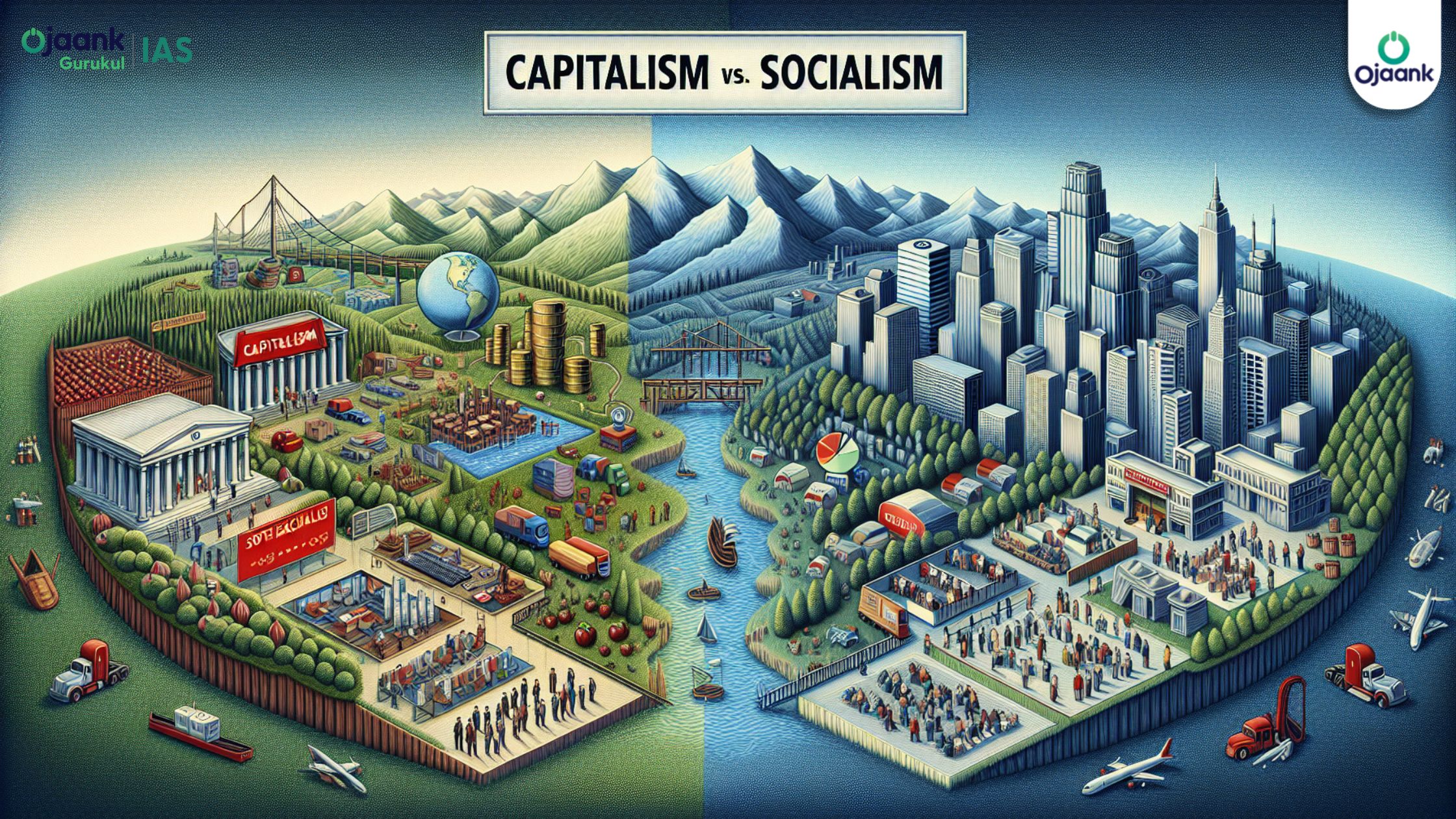Capitalism vs Socialism

The Great Economic Debate: Capitalism vs Socialism - A Comprehensive Analysis
1. Introduction to Economic Systems
1.1. Defining Capitalism
Capitalism is an economic system characterized by private ownership of the means of production, where goods and services are exchanged in a free market. In this system, individuals and businesses make most of the decisions, and the government's role is limited.
1.2. Defining Socialism
Socialism is an economic and political system in which the means of production, distribution, and exchange are owned or regulated by the community as a whole, typically through the state. It aims to create a more equal society by redistributing resources.
1.3. Historical context and development
Both capitalism and socialism have evolved over time. Capitalism emerged during the Industrial Revolution, while socialism gained prominence in the 19th and 20th centuries as a response to perceived inequalities in capitalist societies.
2. Core Principles of Capitalism
2.1. Private ownership and property rights
In capitalist systems, individuals and businesses have the right to own property and the means of production. This principle is fundamental to the capitalist ideology.
2.2. Free market economics
Capitalism relies on the concept of a free market, where prices are determined by supply and demand rather than government intervention.
2.3. Competition and profit motive
The drive for profit and competition between businesses are key elements of capitalism, believed to foster innovation and efficiency.
3. Fundamental Concepts of Socialism
3.1. Collective ownership of means of production
Under socialism, the means of production are owned collectively by the community or the state, rather than by private individuals or corporations.
3.2. Central planning and resource allocation
Socialist economies often feature central planning, where the government makes decisions about production and distribution of resources.
3.3. Wealth redistribution and social welfare
Socialism emphasizes the redistribution of wealth to reduce inequality and provide for the basic needs of all citizens.
4. Economic Efficiency and Resource Allocation
4.1. Market-driven allocation in capitalism
In capitalist systems, resources are allocated based on market forces, with the assumption that this leads to the most efficient outcomes.
4.2. State-controlled distribution in socialism
Socialist systems rely on centralized planning to distribute resources, aiming to meet the needs of society as a whole.
4.3. Comparative analysis of efficiency
Both systems have strengths and weaknesses in terms of efficiency. Capitalist markets can be responsive to consumer demands, while socialist planning can potentially reduce waste and overproduction.
5. Income Inequality and Wealth Distribution
5.1. Wealth concentration in capitalist societies
Capitalist societies often experience significant wealth concentration, with a small percentage of the population holding a large share of the wealth.
5.2. Egalitarian approach in socialist systems
Socialist systems aim to reduce income inequality through wealth redistribution and social programs.
5.3. Impact on social mobility and opportunity
The different approaches to wealth distribution in capitalism and socialism can have significant effects on social mobility and access to opportunities.
6. Innovation and Technological Progress
6.1. Capitalist incentives for innovation
Capitalism's profit motive and competition are often credited with driving innovation and technological advancement.
6.2. Socialist approach to research and development
Socialist systems may focus on collective research efforts and the application of technology for social benefit rather than profit.
6.3. Comparative analysis of technological advancements
Both systems have produced significant technological advancements, though the motivations and methods differ.
7. Role of Government in the Economy
7.1. Limited government intervention in capitalism
Capitalist systems typically advocate for limited government intervention in the economy, favoring market-driven solutions.
7.2. Extensive state control in socialism
Socialist systems involve significant government control over economic planning and resource allocation.
7.3. Mixed economies and the spectrum of government involvement
Many modern economies fall somewhere between pure capitalism and socialism, incorporating elements of both systems.
8. Labor Rights and Working Conditions
8.1. Employment in capitalist systems
Capitalist systems often emphasize individual responsibility and flexibility in the labor market.
8.2. Labor policies in socialist economies
Socialist systems typically provide stronger worker protections and emphasize collective bargaining rights.
8.3. Comparative analysis of worker protections and benefits
Both systems have different approaches to worker rights and benefits, with varying outcomes for labor conditions and job security.
9. Environmental Considerations
9.1. Capitalist approach to environmental issues
Capitalist systems often rely on market-based solutions and regulations to address environmental concerns.
9.2. Socialist perspective on ecological sustainability
Socialist systems may prioritize environmental protection as part of overall social planning.
9.3. Comparative analysis of environmental policies
Both systems face challenges in balancing economic growth with environmental protection, though their approaches differ.
10. Summary and Conclusion
The debate between capitalism and socialism continues to shape economic and political discourse. Both systems have strengths and weaknesses, and many societies incorporate elements of both. Understanding these economic systems is crucial for informed civic participation and policy-making.